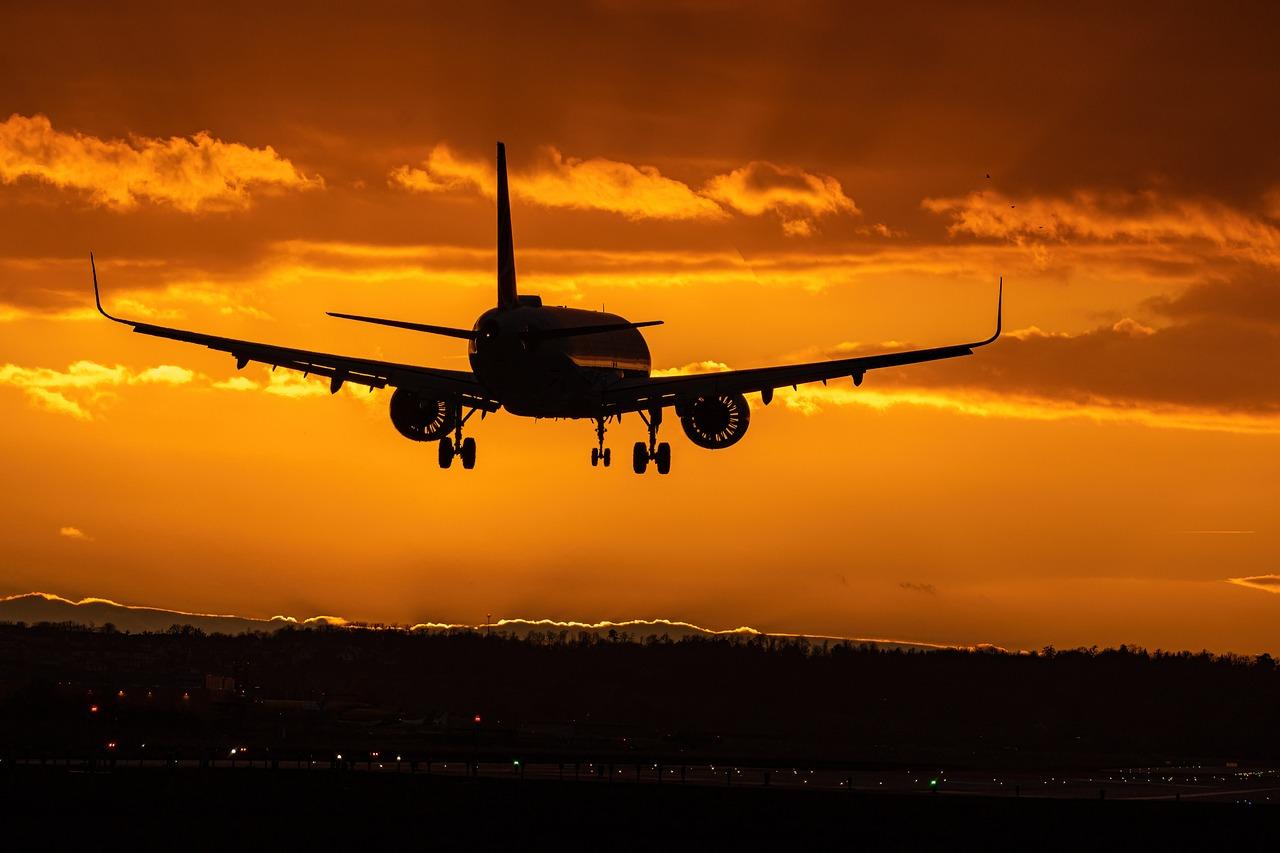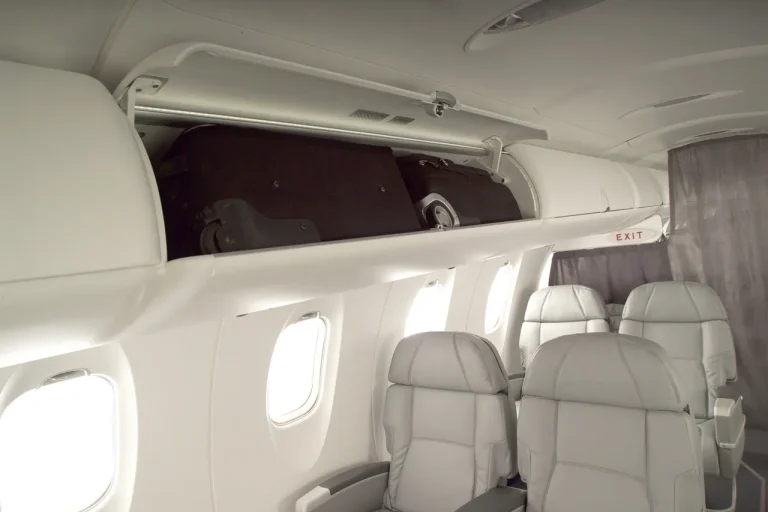If you’ve ever wondered what those charges are when you buy an airline ticket, airport landing fees are a big component.
These fees allow airlines to use airport infrastructure and services. Landing fees make up a large portion of an airport’s revenue, so how are they determined, and who pays them?
Read on to learn everything you need to know about the mysterious world of airport landing fees.
What Are Airport Landing Fees?
These fees are an essential part of an airport’s revenue stream and play a crucial role in funding maintenance, operations, and future development projects.
Definition and purpose of landing fees
Landing fees are calculated based on various factors such as the aircraft’s weight, type, and the distance it covers during landing and takeoff.
The purpose of these fees is to cover the costs associated with maintaining and managing airport infrastructure, including runways, taxiways, air traffic control services, and safety measures.
By charging landing fees, airports can ensure that they have the necessary funds to provide a safe and efficient operating environment for airlines and passengers.
Who pays the fees (airlines, not passengers directly)
It is important to note that landing fees are typically paid by the airlines themselves and not directly by the passengers.
Airlines factor in these fees as part of their operational expenses and may incorporate them into ticket prices.
The amount of the landing fee can vary depending on the airport and its location. Some airports may have higher landing fees due to their size, infrastructure, or geographic location.
Landing fees vs other airport fees (paid by passengers)
While landing fees are paid by airlines, there are other fees that are directly paid by passengers. These fees include passenger facility charges, security fees, and fuel taxes, among others.
Unlike landing fees, which are specific to airlines, these passenger fees are collected by the airport authorities or government agencies and are included in the ticket price.
It’s important for passengers to be aware of these additional fees when booking flights, as they can contribute to the overall cost of air travel.
How Are Landing Fees Calculated?
Landing fees at airports are calculated based on various factors, including the weight of the aircraft and sometimes the distance flown.
Generally, the heavier the aircraft, the higher the landing fee. This is because heavier aircraft put more stress on the runway and require more maintenance.
The weight of the aircraft is usually measured in terms of maximum takeoff weight (MTOW).
Based on aircraft weight and sometimes distance flown
The primary factor in determining landing fees is the weight of the aircraft. Airports typically have weight categories with corresponding fees.
Some airports also take into account the distance flown, especially for long-haul flights. This is because longer flights may require additional runway usage and infrastructure resources.
Differences in fee structure between airports
It is important to note that the fee structure for landing fees can vary between airports.
Each airport has its own fee schedule based on factors such as their operating costs, infrastructure investments, and local regulations.
For example, international airports may have higher landing fees compared to regional airports due to the additional services and facilities they offer.
Additionally, airports located in busy metropolitan areas may charge higher fees to manage congestion and ensure efficient operations.
To find the specific landing fees for a particular airport, it is advisable to visit the airport’s official website or contact their operations department for the most up-to-date information.
Other factors like noise level can influence fees
In some cases, airports may consider factors other than just the weight and distance of the aircraft when calculating landing fees.
One such factor is the noise level produced by the aircraft during landing and takeoff.
Airports that prioritize noise reduction may implement noise-based landing fees, where quieter aircraft are charged lower fees compared to noisier ones.
This serves as an incentive for airlines to invest in quieter and more environmentally friendly aircraft.
It’s worth noting that landing fees are just one component of the overall cost airlines incur when operating at airports. Other costs include parking fees, terminal usage fees, and passenger facility charges.
These fees collectively contribute to the airport’s revenue and help fund the maintenance, expansion, and improvement of airport infrastructure.
What Do Landing Fees Cover?
When it comes to airport landing fees, it is important to understand what services and facilities are included in these charges.
Landing fees are typically calculated based on the weight of the aircraft and the distance flown.
They contribute to the overall operation and maintenance of the airport, ensuring a safe and efficient environment for aircraft to land and take off. Here are some of the key areas that landing fees cover:
Runway and taxiway usage
Landing fees contribute towards the upkeep and maintenance of runways and taxiways.
These critical components of an airport infrastructure require regular inspections, repairs, and resurfacing to ensure they are in optimal condition for aircraft operations.
The fees help fund these necessary improvements and ensure the safety of aircraft during takeoff and landing.
Aircraft parking
When an aircraft lands at an airport, it needs a designated parking area to park until its next flight.
Landing fees cover the costs associated with providing adequate parking spaces for different types and sizes of aircraft.
This includes the construction and maintenance of parking facilities, such as aprons and ramps, where aircraft can be safely parked and serviced.
Airport lighting
Proper lighting is essential for safe aircraft operations, especially during night-time or adverse weather conditions.
Landing fees contribute to the installation, maintenance, and operation of runway and taxiway lights, as well as other navigational aids.
These lights help pilots navigate the airport grounds and ensure the safe movement of aircraft during takeoff, landing, and taxiing.
Emergency services readiness
Airports have to be prepared for any emergency situations that may arise during aircraft operations.
Landing fees help fund the provision of emergency services, such as fire and rescue teams, medical personnel, and equipment.
These services play a crucial role in ensuring the safety of passengers, crew members, and airport personnel in case of accidents, incidents, or other emergencies.
Personnel to guide aircraft
Guiding aircraft on the ground is a critical task that requires trained personnel to direct pilots during taxiing and parking.
Landing fees contribute to the employment and training of air traffic controllers, ground handling staff, and other personnel responsible for guiding aircraft movements.
These individuals play an important role in ensuring the efficient and safe flow of traffic on the airport grounds.

Who Sets and Regulates Landing Fees?
When it comes to setting and regulating landing fees at airports, there are several key players involved in the process.
Let’s take a closer look at how these fees are determined and who is responsible for overseeing them.
Airports establish their own fee structures
Airports have the authority to establish their own fee structures based on a variety of factors.
These factors may include the size of the airport, the volume of air traffic it handles, and the types of services and facilities it provides.
Some airports may charge a flat fee for every landing, while others may have a more complex fee structure that takes into account the weight or size of the aircraft.
For example, large international airports may charge higher landing fees for larger aircraft, as these planes require more resources and infrastructure to accommodate.
On the other hand, smaller regional airports may have lower landing fees to attract more traffic and stimulate economic growth in their area.
Airports must get approval from FAA/regulators
While airports have the authority to establish their own fee structures, they must also seek approval from regulatory bodies such as the Federal Aviation Administration (FAA) in the United States.
These regulatory bodies ensure that the fees charged by airports are fair and reasonable, and that they comply with established guidelines and regulations.
The FAA, for example, examines landing fee proposals to ensure they are not discriminatory or excessive. They also evaluate whether the fees are necessary to cover the costs of airport operations and improvements.
If an airport fails to meet these regulatory requirements, the FAA may intervene and require adjustments to the fee structure.
Disputes over unreasonable fees may be settled by courts
In some cases, disputes may arise between airlines and airports over landing fees that are deemed unreasonable or unfair.
When negotiations fail to resolve these disputes, they may be taken to court for resolution.
Courts will consider factors such as the reasonableness of the fees, the financial impact on the airlines, and the overall benefit to the airport and the aviation industry.
It’s important to note that the regulatory oversight and legal intervention in landing fee disputes aim to strike a balance between the financial sustainability of airports and the affordability for airlines.
This ensures a fair and competitive environment for all stakeholders involved in the aviation industry.
Case Studies of Landing Fees at Major Airports
JFK, LAX, ORD: Large hubs with complex fee structures
When it comes to landing fees at major airports like John F. Kennedy International Airport (JFK), Los Angeles International Airport (LAX), and O’Hare International Airport (ORD), the fee structures can be quite complex.
These airports handle a large volume of flights and have to manage various costs associated with maintaining their facilities and providing services to airlines.
At JFK, for example, the landing fees are calculated based on the weight of the aircraft and the time of day.
The airport has different rates for peak hours and off-peak hours, with higher fees during busy periods to incentivize airlines to schedule their flights during less congested times.
LAX, on the other hand, uses a different approach.
The landing fees at LAX are determined based on the size of the aircraft and the type of operation, such as domestic or international flights.
The airport also takes into account the noise level of the aircraft, with quieter planes receiving lower fees.
ORD has a unique fee structure that combines weight-based charges with a per-passenger fee.
This allows the airport to capture both the costs associated with aircraft operations and the passenger services provided by the airport.
SEA, MCO, DCA: Midsize airports and their landing fee models
Midsize airports like Seattle-Tacoma International Airport (SEA), Orlando International Airport (MCO), and Ronald Reagan Washington National Airport (DCA) also have their own landing fee models.
While these airports may not handle as much traffic as the major hubs, they still play a crucial role in connecting passengers to their destinations.
SEA, for instance, has a landing fee structure that is based on the weight of the aircraft.
The airport also offers discounts for airlines that operate a certain number of flights or meet certain environmental criteria. This incentivizes airlines to choose SEA as a preferred destination.
MCO, on the other hand, has a simplified fee structure that is based on the aircraft’s maximum takeoff weight.
DCA, as a federally regulated airport, has a landing fee model that is approved by the Federal Aviation Administration (FAA).
The fees at DCA are based on the aircraft’s maximum takeoff weight and the airline’s share of operations at the airport.
IAD, SFO, ATL: How the busiest airports determine fees
When it comes to the busiest airports like Washington Dulles International Airport (IAD), San Francisco International Airport (SFO), and Hartsfield-Jackson Atlanta International Airport (ATL), determining landing fees is a complex process due to the high volume of flights and passengers they handle.
IAD has a fee structure that takes into account the aircraft’s maximum takeoff weight, the number of passengers carried, and the distance flown.
This comprehensive approach allows the airport to capture the costs associated with both aircraft operations and passenger services.
SFO, known for its commitment to sustainability, has a landing fee model that considers the aircraft’s emissions.
Airlines that operate cleaner and quieter aircraft are rewarded with lower landing fees, encouraging the use of more environmentally friendly technologies.
ATL, being the busiest airport in the world, has a complex fee structure that includes charges based on aircraft weight, passenger volume, and airport facilities usage.
The airport also offers discounts for airlines that commit to long-term agreements and increase their operations at ATL.
Conclusion
In summary, landing fees are an important but opaque part of the aviation industry. The charges help airports provide critical infrastructure to airlines and contribute greatly to their operating budgets.
While the exact formulas are complex, fees are based primarily on aircraft weight and distance flown. Disputes can arise, but ultimately airports have significant leeway to set fees as long as they are deemed reasonable.
The next time you buy an airline ticket, know that a portion is going towards reimbursing the airport for its costs to safely guide the aircraft to the gate.






